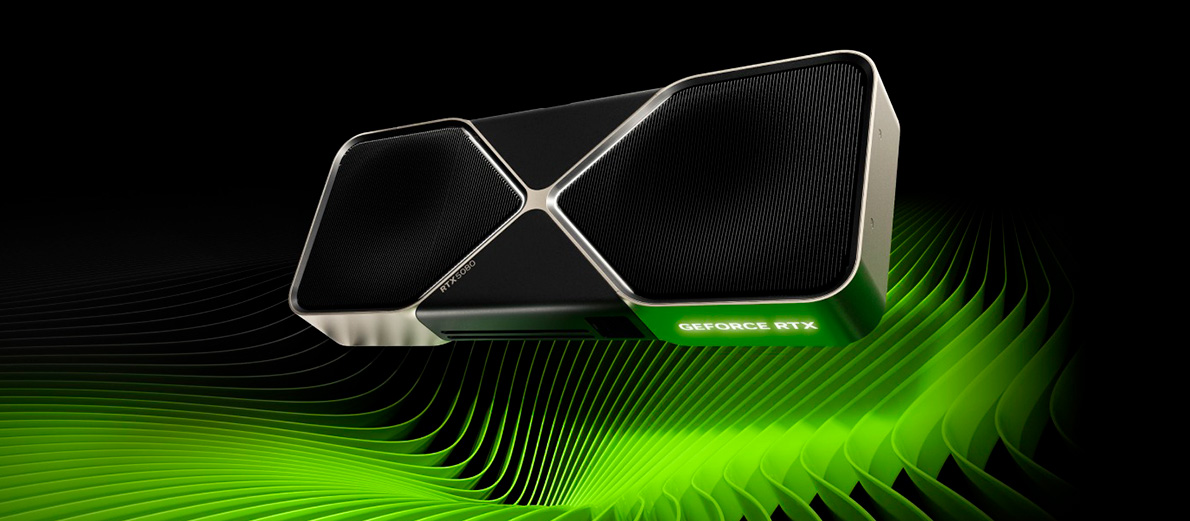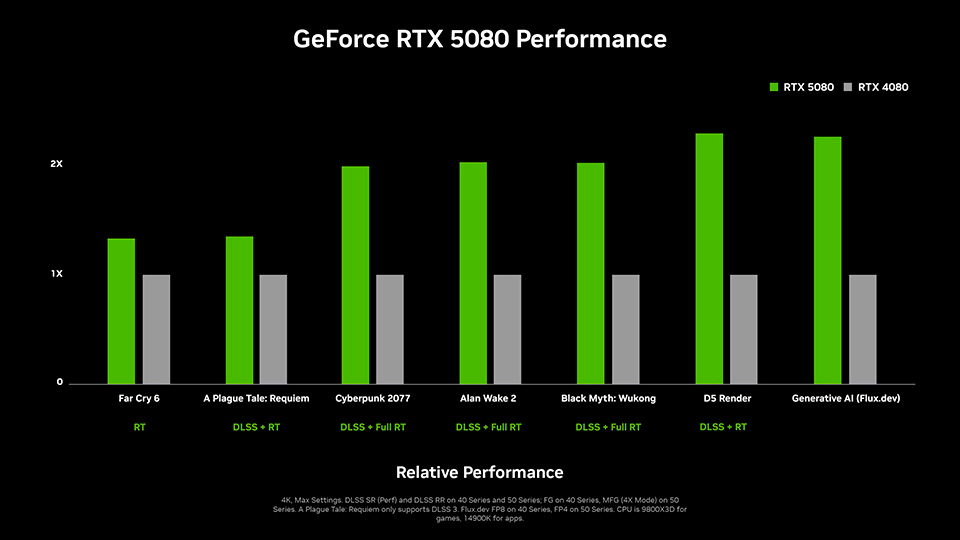- Key Changes
- Gaming Performance
- Performance in Applications
- Conclusion
- HYPERPC Computers with RTX 5080

The NVIDIA GeForce RTX 5080 was released in early 2025. NVIDIA is positioning it as a replacement for the GeForce RTX 4080 and 4080 Super. Today, we will discuss how the new product differs from its predecessors and whether it is worth buying previous-generation video cards in 2025.
Key Changes
The GeForce RTX 5080 differs from the RTX 4080 by:
- increased gaming performance;
- support for multi-frame generation DLSS 4;
- increased performance in applications.
Let's talk about specific numbers and examples next.

RTX 4080 Super vs RTX 5080: Gaming Performance
The performance of the RTX 5080 has increased by approximately 15-30%. The exact results depend on the game, its optimization quality, as well as graphics settings and resolution.
The RTX 5080 supports DLSS 4. The new version differs from the previous DLSS 3 by supporting multi-frame generation technology, which can create 3 or even 4 intermediate frames between two real ones. For comparison, regular generation can only create one frame.
The new algorithm is capable of more than doubling FPS and making gameplay even smoother. Multi-frame generation makes it possible to maximize the capabilities of monitors with high refresh rates and almost forget about video game system requirements.
Support for DLSS 4 and increased graphics processor power make the NVIDIA GeForce RTX 5080 an ideal solution for 4K gaming in terms of price and performance. This video card is significantly cheaper than the flagship RTX 5090, and yet its power is enough for Ultra HD resolution.
RTX 5080 vs RTX 4080: Performance in Applications
In addition to a more powerful graphics processor, the GeForce RTX 5080 received a new standard of video memory – GDDR7. This allowed for an increase in memory bandwidth, which is primarily important for professional programs and applications.
The biggest difference in performance between the new video card and the previous generation device is noticeable in editing. The RTX 5080 received not only faster memory, but also new encoders with decoders of the 9th generation NVENC. They significantly speed up work in editing applications. The new card also supports 10-bit video files with 4:2:2 chroma subsampling.
The GeForce RTX 5080 has become much more productive when working with machine learning. This was achieved due to the new generation of tensor cores. The greatest increase in power is noticeable in models with quantization up to 4-bit numbers. In this case, the RTX 5080 can demonstrate a two-fold increase in performance when working with AI.
RTX 5080 vs RTX 4080: Conclusion
Comparing the RTX 5080 against the RTX 4080, it becomes obvious that the new product is significantly better:
- increased gaming performance by 15-30% even without enabling DLSS;
- more than a two-fold increase in FPS in games using DLSS 4 and multi-frame generation;
- higher performance in working applications thanks to new GDDR7 memory, NVENC 9th generation codecs, and tensor cores.
The energy consumption of the new product is only 30 W more than its predecessors, and the recommended cost is similar. Given this, it makes no sense to buy the NVIDIA GeForce RTX 4080 or 4080 Super.
HYPERPC Computers with RTX 5080
By choosing a HYPERPC computer with a GeForce RTX 5080 video card, you will get outstanding performance in both games and professional applications. All graphics technologies will be available to you, including DLSS 4 with multi-frame generation. This will allow you to forget about video game system requirements and fully immerse yourself in the gameplay of your favorite projects.